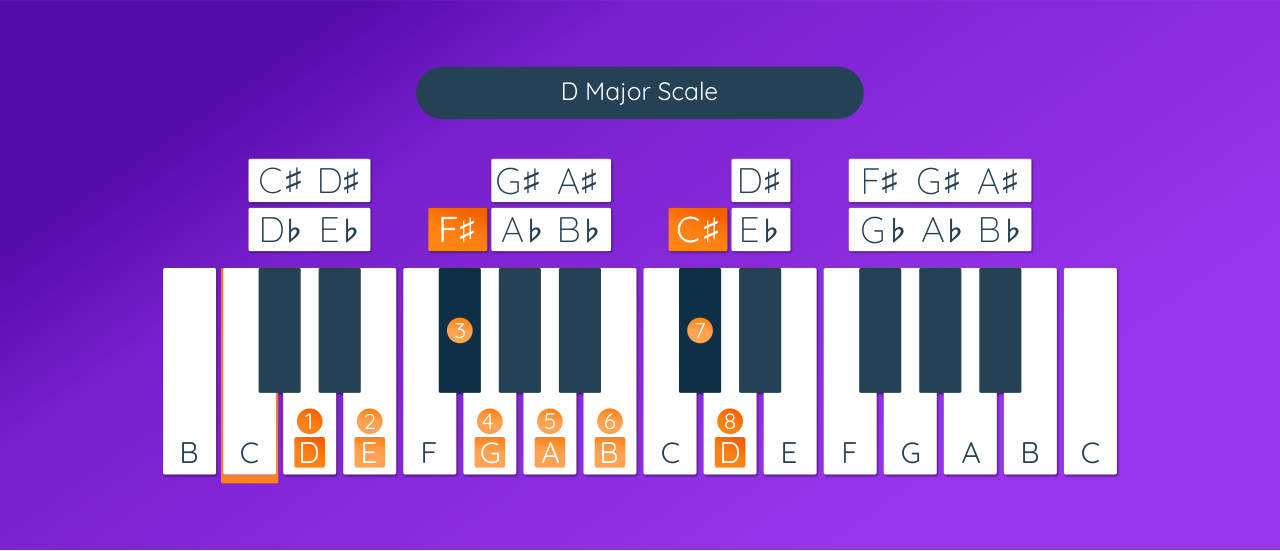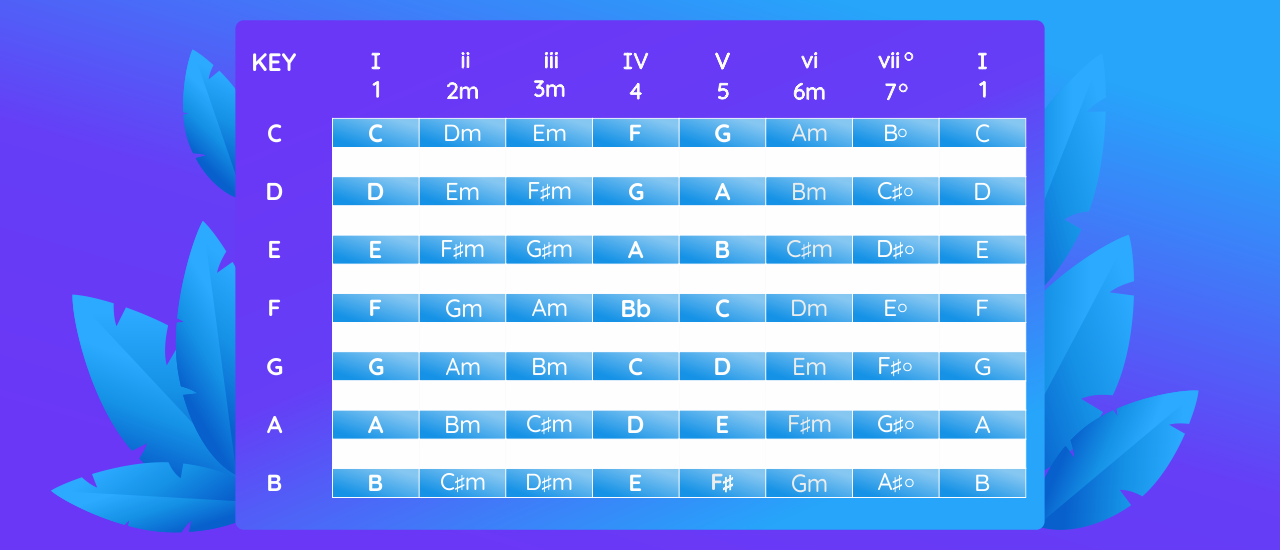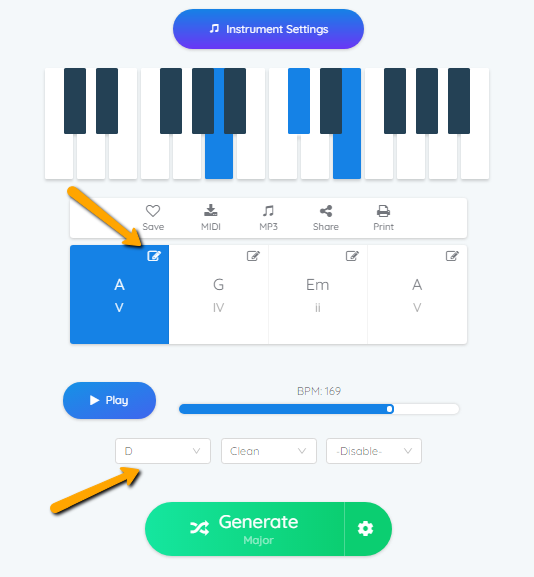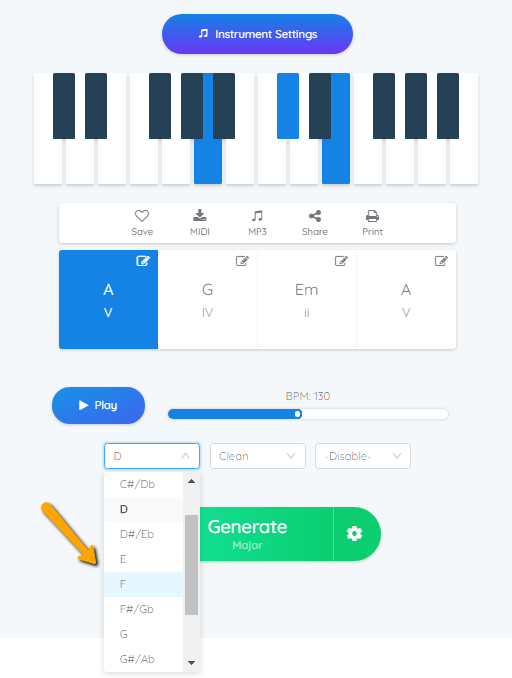How Nashville Number System Can Make Your Life Easier

Nashville Number System is a simple method of writing and transcribing music notes and chords.
Nashville Number System is a very valuable concept to learn, regardless of your current musical knowledge. It will allow you to easily translate scales into different keys, learn and incorporate new scales much faster since you won't need to learn them note per note. Just learn the respective scale intervals and you can easily find the notes of those scales on any instrument!
You need to understand the basic scales theory to understand the scale intervals and be able to apply this system. However, once you get a good grasp of how this works and incorporate it into your memory, you will make a lot of things much easier for you 🙌
Your improvisation skills will go up a level, and you will find it much easier to play with other musicians as well!
We've prepared super cool cheat sheet table and an instruction for you so let's dive into it!

Writing a scale with numbers
Essentially, it is a numeral system for writing scales and chord progressions.
Let's take the key of D major. This scale has 7 notes: D, E, F#, G, A, B, C#
Now, let's just assign numbers 1-7 to those notes respectively and from now on refer to them by those numbers.
So, our keynote D will be number 1. E is number 2, F# is 3 and so on.

Now, let's write a chord progression using our number system.
For example, we will take a simple F#m-A-E-D progression. Instead of writing chords like this, we will write their numeral values in the key of D-major. So, it would be 3-5-2-1.
Writing chords with numbers
While we can use standard Arabic numbers to represent our chords, it is mostly done in Roman numerals. The reason behind this is that the Roman numerals are actually serial numbers. In Arabic numerals, you would have to add a dot after the number. And this can often lead to misunderstanding or unclear representation.
Also, our numbers are referring to intervals from our root note: third, fifth, etc.
Another thing to note is that when we are referring to chords in a certain key, minor chords are enumerated using lowercase Roman numerals, while major ones are uppercase.
So, for example, chords in our D-major scale would be translated to numbers like this:
D - I E - ii F#m - iii G - IV A - V B - vi C#mdim - vii*
* is being used to mark diminished chords
We have also prepared a super cool table that illustrates chords for all the major scales! Check it out!

Translating chord progressions into other keys
For example, you want to sing a song that is in the key of A minor. Let's say that your harmony is Am-F-C-G. We will take this for our example because it's basic and it's found in 90% of the songs. So, your progression is i-VI-III-VII, if you already know the chords of your A minor scale.
But you can't sing this high, so you want to take the song one step lower ⬇️. What you can do is just play the same progression but in the key of G minor. You keep the same intervals, but lower everything by one step and you get Gm-Eb-Bb-F.
If you need to move it for another step, or half a step, it's really easy now! Just repeat this until you find the most comfortable key for this song to perform in.
In case you are not that familiar with the chords, each scale consists of - you can easily use the Chord Generator to translate the progression into other keys in a blink of an eye.
Here is how to do it.
Let's say you want to play a song and the chords are A - G - Em - A (in the Key of D). You need to enter the chords of your progression to the key fields and chose the key as sown on the picture:

The system will automatically assign the numerals of the chords and show them under the chords. Here you can see it's V-IV-ii-V
Now as you've set it up - go ahead and change the key - the chords will be translated automatically while the numerals remain the same.

As easy as that! 🎉
Pentatonic scale
Have you ever read anything about the Pentatonic Scale? If not - you should check out my previous post where I teach about it. It's a great tool that'll help you write the melodic songs ever.
In any post or video, you will find on the Pentanonic Scale is always explained through the numbers (as well as lots of other concepts from the music theory) so it's a vivid example of how knowing the Nashville Number System will help take your skills to a completely new level! 😎
Literally, 99% of today's music is based solely on the pentatonic scale, with the addition of natural minor or major, so it's a valuable addition!
Long story short: Major Pentatonic Scale consists of 1 - 2 - 3 - 5 - 6 notes, Minor Pentatonic Scale consists of 1 - 3 - 4 - 5 - 7 notes.
What are those numbers? It's actually very easy! Those numbers are intervals from your natural minor scale in relation to your root note. But we won't be dive into this too much. You can learn more about it here.
Tips for the Beginners
This whole story with numbers may sound complicated if you haven't delved much into music theory. But in reality, it's very easy to learn and incorporate and it will certainly prove its usefulness in no time!
It will be tricky to use it in the beginning, if you're not really used to playing with a lot of theory in mind, but as your knowledge of music theory expands, you will notice that you will find additional ways to use this number system.
Also, as you get accustomed to this system, you will be able to learn new songs faster and recognize certain progressions and patterns just by hearing them. All that's left for you to do is find the key of that song and you will be playing those verses and choruses in no time!
